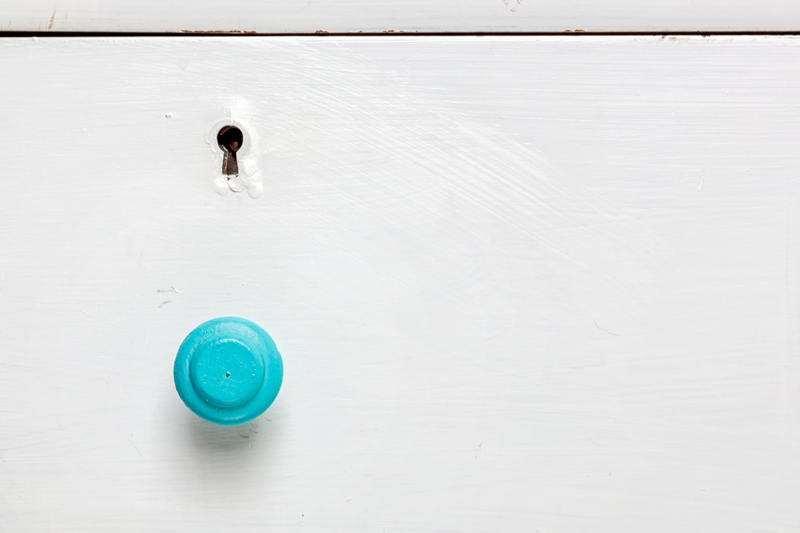Where to Take Pots and Pans for Safe Recycling
Are your old pots and pans taking up valuable kitchen space? Whether they are scratched, misshapen, or simply no longer in use, it's important to dispose of them responsibly. Recycling old cookware not only prevents environmental harm but also gives these materials a new life. In this comprehensive guide, we'll walk you through where to take pots and pans for safe recycling, the environmental benefits, and best practices for eco-friendly cookware disposal.
Why Should You Recycle Old Pots and Pans?
Every year, millions of tons of metal products--including used cookware--end up in landfills. Unlike biodegradable waste, metals can take hundreds of years to break down, leaching toxins as they decompose. Recycling cookware conserves valuable natural resources, reduces greenhouse gas emissions, and limits the need for raw material extraction. By choosing to recycle, you are actively protecting the environment and promoting a sustainable future.
Environmental Benefits of Recycling Cookware
- Resource Conservation: Recycling aluminum and stainless steel pans saves raw materials and energy.
- Pollution Reduction: Prevents heavy metals and chemical coatings from contaminating soil and water.
- Lower Carbon Footprint: Manufacturing from recycled metals emits fewer greenhouse gases than mining virgin materials.
- Landfill Space: Reduces pressure on already overflowing landfills.

Understanding Cookware Materials: Can All Pots and Pans Be Recycled?
Before you search for safe recycling centers for old pots and pans, it's important to understand what your cookware is made of, as this affects recycling options.
Common Cookware Materials
- Aluminum - Lightweight and highly recyclable.
- Stainless Steel - Durable, rust-resistant, and widely accepted at scrap yards.
- Cast Iron - Heavy but recyclable at many metal facilities.
- Copper - Valuable for recycling, often accepted separately at scrap metal recyclers.
- Nonstick (Teflon) - Trickier due to chemical coatings. Many curbside programs do not accept these.
- Enamel-Coated - May be accepted if the base metal is recyclable, but check with the facility.
Note: Most kitchen cookware is not recyclable via regular curbside bins, especially those with plastic handles, glass lids, or nonstick coatings.
Where to Take Pots and Pans for Safe Recycling
If you're wondering where to recycle pots and pans in your area, here's an in-depth look at your options:
1. Local Scrap Metal Yards
Scrap metal facilities are the most common drop-off points for old cookware. They accept a broad range of metals, such as aluminum, stainless steel, cast iron, and copper. Separate your items by material for the best payout and ensure that any plastic or wood handles are removed first.
- Check your local listings for "scrap metal recycling near me."
- Bring proof of residency as some yards require it for drop-offs.
- Verify if they accept nonstick or enamel-coated pans, as some yards do not.
- Inquire about payment: some yards pay for valuable metals like copper or aluminum.
2. Municipal Recycling Centers
Many municipalities have specialized recycling drop-off centers for household items not covered by curbside pickup. Search for your town's official recycling page or call for guidance.
- Review guidelines on their website for accepted materials.
- Ask if non-metal parts (glass lids, silicone handles) need removal.
3. Big-Box Retailers with Take-Back Programs
Some national and regional retailers offer cookware recycling programs to encourage eco-friendly disposal. Notable programs include:
- William Sonoma: Occasional recycling or trade-in events for old cookware.
- Bed Bath & Beyond: Select locations have taken cookware back in the past--call ahead for updates.
- Sur La Table: Offers recycling drops during promotional periods.
Most retail programs do not accept heavily damaged or soiled pans, so clean and prepare your cookware before drop-off.
4. Nonprofit Organizations and Donation Centers
If your old pots and pans are still usable, consider donating them. Many thrift stores and charities accept cookware in good condition. Examples include:
- Goodwill
- Salvation Army
- Habitat for Humanity ReStores
- Local shelters or food banks
Note: While donation is technically reuse and not recycling, it diverts waste from landfills and helps others in need.
5. Specialized Recycling Events
Some communities host annual or semi-annual recycling events for hard-to-recycle household items. Here, you can safely dispose of items like nonstick pans or mixed-material pots that curbside programs don't accept.
- Search local government pages or community bulletins for event announcements.
- Prepare items as directed (removing residue and non-metal parts).
6. Manufacturer Take-Back Programs
Some cookware brands are getting proactive about sustainability. Manufacturer take-back programs allow you to send retired pans back for recycling or refurbishment.
- Calphalon: Has run recycling programs for old cookware; check their website for updates.
- GreenPan and other eco-friendly brands may accept their own products for proper disposal.
These programs are not widespread yet, but they're growing as customers demand sustainable cookware recycling options.
Preparing Your Pots and Pans for Recycling
Proper preparation maximizes the chances your cookware can be safely and effectively recycled.
- Clean Thoroughly: Wash off grease, food residue, or burnt-on material. Most recycling facilities require clean metal.
- Remove Non-Metal Parts: Unscrew and discard plastic handles, rubber grips, or glass lids unless otherwise accepted.
- Sort by Material: If possible, group your cookware into piles (aluminum, stainless steel, copper, etc.) for easier processing.
- Check for Hazardous Coatings: Nonstick pans with Teflon or other chemical coatings may need special handling. Ask your facility before dropping off.
Can Nonstick Pans Be Recycled?
Nonstick cookware, especially those with Teflon (PTFE) or ceramic coatings, poses unique challenges. Most curbside programs and even scrap yards do not accept these pans because the coatings can't be melted and reused like bare metal.
- If recycling facilities refuse, look for specialized recycling companies that handle chemical-coated items.
- If the pan is aluminum underneath, a facility may accept it after the coating is removed--though this is not always practical for individuals.
When in doubt, call your local recycling hotline for the latest options.
Creative Alternatives: Upcycling and Reusing Old Cookware
If your research into where to recycle pots and pans leaves you short on convenient options, consider upcycling. Old pots and pans can live on as:
- Garden planters for herbs or flowers.
- Art project bases or mosaics.
- Sorting bins for hardware or tools in the garage.
- Bird baths or feeders.
- Lids as mini serving trays or trivets.
Looking for inspiration? DIY websites and video tutorials abound for repurposing tired old pans into useful or decorative pieces!
Frequently Asked Questions (FAQ) About Pots and Pan Recycling
Can I recycle cookware at home through my curbside bin?
No. Most municipal recycling bins do not accept pots, pans, or other large metal items due to their size, coatings, or attached parts. Always take them to a designated facility or event.
Where can I recycle cast iron pans?
Cast iron is 100% recyclable at almost all scrap metal yards or metal recycling drop-offs. Because of its weight, it may even fetch a small payout.
Is it worth it to separate metals before recycling?
Yes. When you separate aluminum, stainless steel, copper, and cast iron, you help the recycling center process them more efficiently and may increase your compensation at scrap yards.
What should I do with cookware that's broken or unsafe for use?
If it's not suitable for donation, follow the steps above for safe recycling of pots and pans: clean, strip non-metal parts, and take it to a specialized recycling or scrap metal facility.
Do retailers accept any brand of cookware for recycling?
Most store programs accept any brand during promotions, but always check details online or call ahead, as some are brand-specific.
Tips for Sustainable Cookware Use
The best way to reduce kitchen waste is to buy less and maintain what you own. Here are a few tips for prolonging the life of your pots and pans:
- Avoid metal utensils on nonstick surfaces to prevent scratches.
- Hand-wash instead of dishwashing delicate or coated pans to preserve finishes.
- Follow manufacturer instructions for cleaning and care.
- Consider investing in high-quality, long-lasting cookware that's easier to recycle.

Find a Local Recycling Drop-Off: Resources & Search Tools
Not sure where to recycle old cookware locally? Here are some reputable online directories:
- Earth911: Enter "cookware" or "metal pots and pans" and your ZIP code to find the nearest recycling centers. Earth911 guide
- RecyclingCenters.org: Directory for scrap metal and household item recycling locations.
- Your local government's waste management site: Often the most up-to-date for community events and rules.
- Call2Recycle: While focused on batteries and electronics, some have lists for specialty recycling drop-offs.
Conclusion: Responsible Pots and Pans Disposal Makes a Difference
Understanding where to take pots and pans for safe recycling empowers you to make responsible, eco-friendly choices and keep kitchen clutter under control. By utilizing local scrap metal yards, municipal recycling centers, take-back retailer programs, and donation options, you ensure your old cookware is reclaimed and not wasted.
When in doubt, use recycling directories or call your local waste authority. And, remember: if a pan can still be used, donate it. If not, choose the most sustainable path for recycling. A small step for you, a big step for our planet!
```